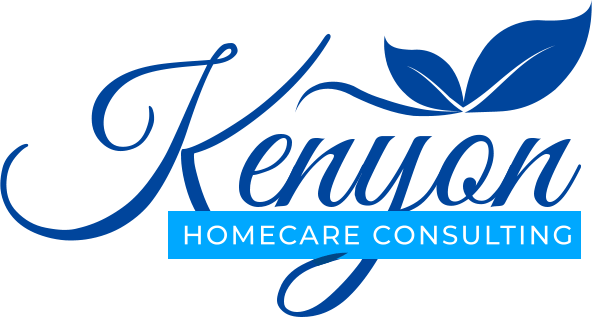The Hidden Struggles of Home Health: Ensuring Quality of Care
Quality of care in home health presents challenges related to providing effective and safe care in a patient's home. Issues include inadequate staffing and training (chronic diseases in particular), communication breakdowns, difficulty assessing patient progress, and logistical challenges (unfamiliar environments and equipment). Plans of care that are not centered around the patient’s wishes for care (patient centered care), lack of resources, and the need for robust safety protocols contribute to these issues. While the comforts of home are a clear benefit, home health care faces unique challenges that can impact the quality of care provided. These issues often arise from the inherent differences between the home environment and more controlled clinical settings.
Here's a breakdown of common quality of care issues:
1. Medication management:
- Complexity: Patients often manage numerous medications, potentially prescribed by multiple providers, leading to confusion about dosages, schedules, and potential interactions.
- Errors: Up to 30% of older home health patients experience potential medication problems including taking the wrong medication or dose, missing doses, or using incorrect administration routes.
- Caregiver burden: Caregivers, especially family members, may lack the training and oversight to effectively manage complex medication regimens, according to regencyhcs.com.
- Patient factors: Cognitive impairments, multiple health conditions, and complex medication schedules further elevate the risk of medication errors in the home setting.
2. Communication and coordination:
- Lack of understanding of what “Patient Centered Care” really means and how to implement and communicate a plan that is centered around the patient’s wishes for care.
- Communication gaps: Ineffective communication among healthcare providers (including nurses, aides, and physicians) directly and between providers and patients/families can lead to misunderstandings, fragmented care, and increased safety risks.
- Care transitions: Poor communication during care transitions, such as hospital discharge, can result in patients not receiving essential information or follow-up instructions.
- Coordination challenges: The involvement of multiple individuals and organizations in a patient's care can create difficulties in coordinating services and ensuring everyone is on the same page, according to NYU.
3. Infection control:
- Unique environment: Maintaining strict infection control measures can be more challenging in a less controlled home setting compared to a hospital.
- Exposure risks: Home health workers face increased exposure to infectious agents when caring for patients who may have infectious diseases.
- Compliance and training: Compliance with hand hygiene and appropriate use of Personal Protective Equipment (PPE) may be inconsistent, and inadequate training can contribute to infection risks.
- Patient vulnerabilities: Patients with chronic conditions, wounds, or medical devices are at higher risk for infection, and caregivers' lack of training can further exacerbate this risk.
4. Workforce and staffing issues:
- Staff shortages and turnover: High turnover rates among home health workers can lead to staffing shortages which impact the agencies' ability to meet patient needs and while potentially compromising care quality.
- Training and competency: Challenges arise in training caregivers to meet complex patient needs and ensure they have the required skills for home care. Education in disease specific issues is crucial especially when there are several impacting diagnoses.
- Work environment and support: Difficult working conditions, including workload pressures, unpredictable schedules, and potential lack of support can contribute to stress and burnout among home health workers.
5. Technology integration:
- Interoperability and outdated systems: Many home health agencies struggle with integrating various IT systems, leading to inefficiencies, errors, and communication gaps.
- Digital literacy: Patients and caregivers may have varying levels of technological literacy, requiring training and support to effectively utilize digital health tools for care management and communication.
- Infrastructure limitations: Inadequate internet access or outdated hardware in some homes can hinder the effective implementation of technology-based care solutions.
In conclusion, addressing these challenges requires a multifaceted approach, including improved medication management strategies, enhanced infection control measures, efforts to improve staff recruitment and retention, better communication and coordination among all parties. It is particularly important to have the patient/client involved in the care plan with consideration of technology integration to ensure high-quality and safe care for patients in their homes.
Resources:
Patient Safety and Quality in Home Health Care - NCBI
Sep 15, 2014 — Nearly one-third of older home health care patients have a potential medication problem or are taking a drug considered inappropriate for older people.
National Institutes of Health (NIH) | (.gov)
How Is Quality of Care in Home Healthcare Created?
May 31, 2022 — Abstract. The demographic challenges with an increase in older adults in need of nursing care have put home healthcare services under pressure. However, research...
National Institutes of Health (NIH) | (.gov)
The Challenges Home Health Care Aides Face in Medication
Mar 15, 2019 — Medication Management: Coordination and Communication * Lack of trust between caregivers and patients. * Lack of relationships/communication between providers
Whether it is the Federal Government, a state agency, or the patients/clients we serve, we are all governed by and responsible for the quality of care provided. If your quality measures are below the standards or you have numerous complaints about care and are struggling with corrective measures, Kenyon Home Care Consulting can help. We are all senior managers with at least 20+ years in administrative or management positions. We are here to help. Call 206-721-5091 or email gkenyon@kenyonhcc today.
Results Based Consulting
Did you find value in this blog post? Imagine what we can do for your home care or hospice agency. Fill out the form below to see how we're leading the industry with innovation, affordability, and experience.










